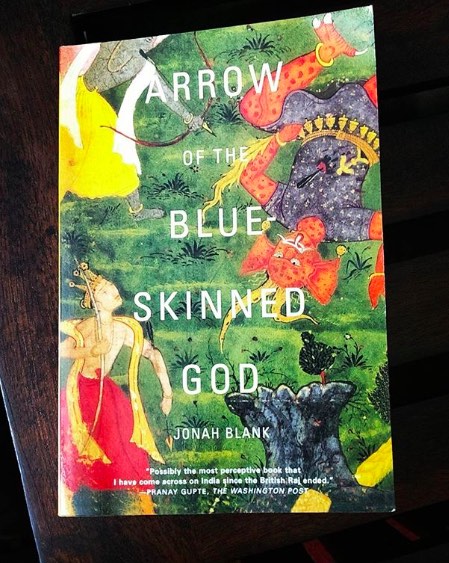Jonah Blank
If you read the book solely for the connection to mythology, you might come away disappointed. It happened to me for most of the book until I framed it as a travelogue which happened to connect to the Ramayana and its principal characters in quite a few ways. In that frame, barring a couple of questionable occurrences, (“feni in Kerala” made me wonder whether calling Bruce Lee a cricketer was actually sarcasm) it does a wonderfully lucid job.
The book was published in 1992 and it is always a pleasure to travel in time through books because, to quote the author, it “presents a picture of a certain place at a certain time, as seen by a certain person at a certain stage of his own life”. It is quite an interesting time to read this because 1992 was a landmark year for the powers that govern the country now. I’m referring to the demolition of the Babri Masjid. That’s where this journey starts.
I think the problem was in my expectations. I thought this would be a linear journey – both in terms of the chronology of the events in the Ramayana, as well as in terms of covering the geography featured in the epic. It doesn’t work that way. While there are definitely quite a few interesting explorations of the geography, the book is more a study on the deep impact that the epic has even today in the life of an Indian. Not just at an individual level, but the societal, cultural, and political aspects as well.
The writing is largely non judgmental, and it would seem that the author is in wonder and awe of the subcontinent. And that makes the humour actually work. From actors playing gods and demons in the television portrayal of the epic, and the fascinating variety of Indian idols (the original kind, not the TV show) to Tamil guerrillas, Sikh militants, and Page 3 crowds, karma yogis, sadhus, and Mother Teresa, the book covers a range of characters and scenarios that truly do justice to the burst of flavours that is India. And Sri Lanka too, because the last third of the book is largely set here.
The last 50 or so pages also bring out the sensitivity of the author through the characters he brings up- a widower who visits the Taj every Friday (when entry is free, for he cannot afford the daily fees) because his best memories of his wife are there, the leper from Andhra stuck in Calcutta whose happiness in life is his wife and son. These are poignant tales of ordinary lives, definitely not the kind that could be found in Ramarajya, but very much a reality in modern India.
Definitely worth a read if you’re ok with traveling only 25 years in history, and not thousands.


Leave a Reply